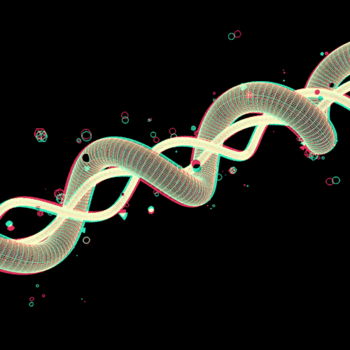Would vestigial structures make any sense if organisms did not evolve?
2 Answers
Well I think they do make sense. Check the explanation-
Explanation:
There are many vestigial structures some of which are given below-
In humans-
1. The vermiform appendix.
2. The wisdom tooth.
3. Male breast tissue and nipples.
4. Chest hair on males.
5. Nails and hairs.
6. Tailbone (Coccyx)
Others-
1. Wings in flightless birds.
2. Hind leg bones in whales.
3. Eyes of Astyanax mexicanus.
4. Sexual organs in Dandelions.
And many more which can be added and the list can go on.
Let me start by the term Vestigial organs-
They are the organs or structures remaining or surviving in a degenerate, atrophied, imperfect condition or form.(as per OED)
Now many of us think that according to Darwin's theory of evolution, the vestigial structures should have been degenerated by now. But that's not what Darwin's complete theory said, his complete theory revolved on the view of survival of the fittest and it is plausible that the structures now vestigial could have been a major reason for the survival of present man i.e. could have been one of the reason to choose the fittest.
Later on Darwin modified the theory and said that the Vestigial structures were a basis to find our lost relatives in the due course of evolution.
Some of the structures which are mentioned in the list of Vestigials aren't really vestigial for eg-
The wings were first of all just simple feathers which served to provide warmth to the organism they were laid upon so you can say that a flock of feathers well known as wings are serving the same function till date in the flightless birds and a modified function of flight has been added in the birds which have been chosen by nature.
Likewise many structures are used in the other way or are helping us, just we don't know what they really do so we classify them as vestigial.
Not making the answer any more longer, you can ask the relative function of other Vestigials in the comments below.
Coming back to the question,
As u already saw the matter above they do make sense in our day-to-day life, we don't realize there work or don't realize the change if they are removed so according to our limited knowledge we have classified them into vestigial structures.
Hope this helps if not changes are welcomed and this was my way of viewing the Vestigials via my finite knowledge.
Yes vestigial structures can be explained by other ideas than Darwin's theory of descent with modification.
Explanation:
Darwin's theory is that organisms have progressed over time from the simple to the complex. That there are structures that seem to no longer serve a useful function was used to support the idea of descent with modification.
Vestigial structures and organs show evidence of a loss of function. This may be change (evolution actually means change) but it is a change that is not progress as required by Darwin's theory of evolution.
The wisdom teeth listed as vestigial structures would serve a useful function if the human jaw was longer as it seems to have been in the past. This is not progress. The appendix is now known to have important functions, in the development and maintenance of the immune system . The appendix also helps to maintain a healthy balance of fauna in the digestive system. That the appendix malfunctions and ruptures shows a loss of function in modern humans, not progress.
Vestigial structures make more sense as a progressive loss of information and function that as evidence for a progressive gain of information and function as postulated by descent with modification or evolution as proposed by Charles Darwin.

